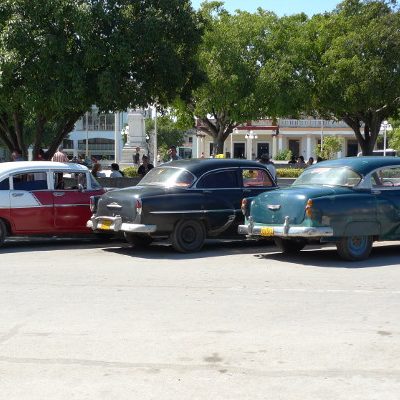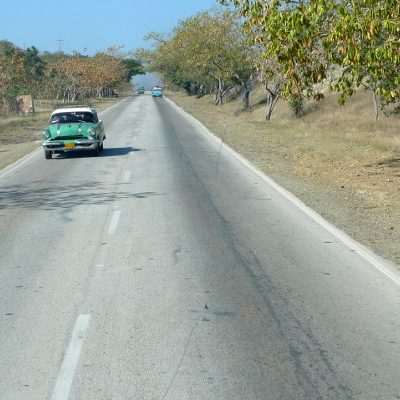One of the first things people associate with Cuba is the old vintage American cars that line the streets and fill garages and driveways. They are eye candy to tourists and are often left parked in places that produce photographic decadence: Studebaker’s, a Chevy Bel Air, Buicks, a De Soto, Plymouths, and the occasional Thunderbird or 1930s model.
With the 1959 Cuban revolution and resulting embargo, American cars stopped flowing into the country. The remaining pre-1960 cars – known as cacharros – are maintained and hacked out of necessity. A recycled bottle cap, Russian engine parts, or re-jigged fuel tank can keep a car running for years.
Private car ownership is also restricted in Cuba and as a result it’s estimated that less than 1% of the population actually own vehicles. Not only is it extremely rare to get government permission to buy a car, but the high cost of oil and gas (a two month salary for some) creates a new problem: how to economically fill those cars that still exist.
Recently the Cuban government introduced an exchange initiative to help combat the cost of fueling old vintage gas guzzling car. In exchange for an old American car, the government would provide a newer efficient European model. Sounds great, but the outcome says otherwise: people refuse to give up their cars. They are considered a part of the family, much like a loved uncle or treasured antique handed down and cared for from generation to generation.














0 comments on “Vintage American Cars in Cuba”Add yours →